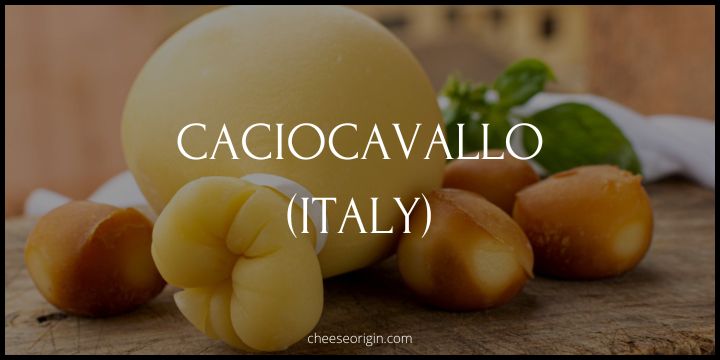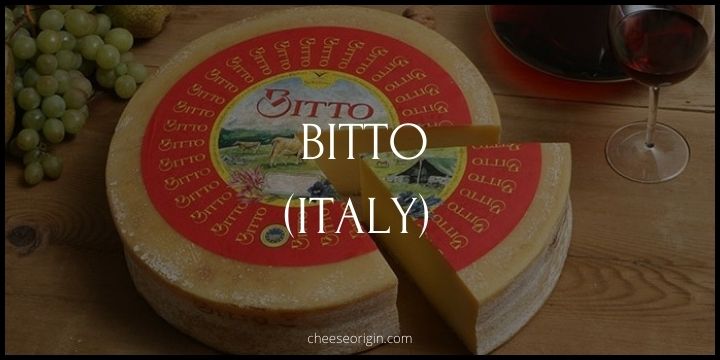What is Muenster Cheese? A Journey Through Taste and Texture

If you’re a cheese enthusiast or simply someone looking to expand your culinary horizons, you’ve come to the right place. This guide is dedicated to one of America’s most beloved cheeses – Muenster.
Muenster cheese, with its mild flavor and smooth, creamy texture, has won over the hearts of many. Yet, there is much more to this versatile cheese than meets the eye (or the palate). From its intriguing history and production process to the best ways to enjoy it, we’re about to embark on a journey that will make you see Muenster in a whole new light.
Whether you’re a seasoned gourmand or a curious foodie, prepare to step into the delicious world of Muenster cheese. We promise you’ll leave with a newfound appreciation for this delightful dairy product, and hopefully, a craving to savor its unmistakable flavor. Let’s dive in!
Quick Facts About Muenster Cheese
| Quick Facts | Description |
|---|---|
| Origin | Alsace, France, and United States |
| Milk Source | Cow’s milk |
| Texture | Smooth, soft |
| Flavor | Mild when young, spicy when aged |
| Color | Pale yellow with an orange rind |
| Aging Process | 5-7 weeks for mild flavor, several months for stronger flavor |
| Uses | Ideal for melting, sandwiches, and cheese platters |
| Production Process | The cheese is washed and brined to develop the distinctive rind |
What is Muenster?
Muenster cheese is a smooth, soft cheese made from cow’s milk. It originated in the Alsace region of France, but is also popular in the United States.
The cheese has a pale yellow color with an orange rind. The rind is edible and is colored with annatto, a natural food coloring.
Muenster cheese has a mild flavor when young, which becomes spicier as it ages. The aging process typically lasts for 5-7 weeks for a mild flavor, but the cheese can be aged for several months for a stronger flavor.
This cheese is known for its excellent melting qualities, making it ideal for use in dishes like grilled cheese sandwiches, macaroni and cheese, and cheeseburgers. It’s also great on a cheese platter, served with fruits and nuts.
What does Muenster taste like?
Muenster cheese is known for its distinctive mild flavor. It has a smooth, creamy texture and a pale color, often with an orange rind.
The taste of Muenster cheese can be described as a balance between creamy, buttery, and slightly tangy flavors. Some people also detect a slight nuttiness, especially in more aged versions of the cheese.
The flavor profile of Muenster makes it a versatile cheese that pairs well with a variety of foods. It melts beautifully, making it a popular choice for dishes like grilled cheese sandwiches, macaroni and cheese, and pizza. But it’s also delicious enjoyed on its own or with fruits and crackers.
Also read: 11 Best Crackers that Pair Well with Cheese
Note: the taste can vary slightly depending on the specific brand and how long the cheese has been aged.
Muenster cheese tasting notes
- Color: Muenster cheese is typically pale in color, with a distinctive orange rind. The interior of the cheese is often a soft yellow or white.
- Texture: The texture of Muenster cheese is smooth and creamy. It’s semi-soft to soft, making it easily sliceable and perfect for melting.
- Smell: Muenster has a mild aroma, which can become stronger and more robust as the cheese ages.
- Taste: The flavor of Muenster is generally mild, with a balance of creamy, buttery, and slightly tangy notes. Some people may also detect a subtle sweetness.
- Aftertaste: The aftertaste of Muenster is light and lingers pleasantly on the palate, showcasing its creaminess and slight tanginess.
- Pairings: Muenster pairs well with a variety of foods and drinks. It goes well with fruits like apples and grapes, and it’s excellent with beers and wines, especially those that have a fruity or crisp character.
- Uses: Due to its excellent melting properties, Muenster is a popular choice for dishes like grilled cheese sandwiches, macaroni and cheese, and pizza. It can also be enjoyed on its own or with crackers.
Why does Muenster cheese taste so good?
The delicious taste of Muenster cheese can be attributed to 5 key factors:
- High-quality milk: Muenster cheese is typically made from cow’s milk, which imparts a creamy, rich flavor that forms the base of this cheese’s distinctive taste.
- Fermentation process: During the cheese-making process, bacterial cultures are added to the milk, which ferment the lactose into lactic acid. This fermentation process contributes to the slightly tangy flavor that balances the creaminess of Muenster cheese.
- Aging process: As Muenster cheese ages, it develops more depth and complexity in its flavor profile. The aging process can bring out subtle notes of nuttiness and enhance the overall taste of the cheese.
- Versatility: Muenster cheese is known for its exceptional melting properties. When melted, the flavors become even more pronounced and the texture becomes irresistibly gooey and creamy. This makes it an excellent choice for a variety of dishes, contributing to its overall appeal.
- Rind washing: Muenster cheese is often washed in a solution that gives it its characteristic orange rind. This process can also add a hint of flavor to the cheese.
Does Muenster taste like Cheddar?
While both Muenster and Cheddar are popular types of cheese, they have distinct flavors and characteristics.
Muenster is known for its mild, creamy, and slightly tangy flavor. It has a smooth and soft texture which makes it melt easily, and it’s often used in dishes like grilled cheese sandwiches and macaroni and cheese.
On the other hand, Cheddar cheese has a more pronounced and sharper flavor which can range from mild to extra sharp depending on the aging process. Cheddar also has a firmer texture compared to Muenster.
>> Click here to read our in-depth guide on Cheddar
The Differences Between Muenster cheese and Cheddar cheese
| Characteristics | Muenster Cheese | Cheddar Cheese |
|---|---|---|
| Origin | Alsace region of France (American version is milder) | Village of Cheddar, England |
| Milk Source | Cow’s milk | Cow’s milk |
| Texture | Semi-soft | Hard |
| Flavor | Mild, creamy to tangy (depends on aging) | Ranges from mild to sharp (depends on aging) |
| Color | Pale yellow with orange rind | White to pale yellow; some varieties have added annatto for orange color |
| Melting Ability | Excellent | Good |
| Uses | Sandwiches, burgers, casseroles, fondue | Sandwiches, crackers, sauces, macaroni and cheese |
| Aging Time | Short, typically a few weeks | Varies widely, from a few months to over two years for extra-sharp varieties |
What is Muenster cheese known for?
- Mild Flavor: Muenster cheese is known for its mild, creamy, and slightly tangy flavor which can become more robust and complex as it ages.
- Semi-Soft Texture: It has a semi-soft texture that makes it easy to slice or melt, making it versatile in a wide range of dishes.
- Distinctive Rind: Muenster cheese is typically recognized by its distinctive orange rind, which is achieved by regularly washing the cheese in a solution during the aging process.
- Excellent Melting Cheese: Due to its texture, Muenster is known for melting well, making it a popular choice for sandwiches, burgers, casseroles, and fondue.
- Versatility: Its mild flavor and excellent melting quality make Muenster a versatile cheese that can be used in a variety of dishes or enjoyed on its own.
- American vs. French Varieties: There’s an interesting distinction between American Muenster and French Munster. The American version is milder and softer, while the French Munster is stronger and more assertive in flavor.
Is Muenster similar to Brie?
Muenster and Brie are both types of cheese, but they have distinct characteristics and are quite different from each other.
| Characteristics | Muenster Cheese | Brie Cheese |
|---|---|---|
| Origin | United States, an imitation of the Alsatian Munster cheese | France |
| Milk Source | Cow’s milk | Cow’s milk |
| Texture | Semi-soft | Soft, creamy |
| Flavor | Mild to tangy, depending on age | Mild, buttery with a hint of earthiness |
| Rind | Orange rind resulting from vegetable coloring, often cut off before eating | Bloomy, edible white rind |
| Uses | Versatile; used in sandwiches, casseroles, and as a topping | Usually served at room temperature on cheese platters, often with fruits and bread |
Muenster Cheese:

- Muenster is a semi-soft cheese made from cow’s milk.
- It has a mild, creamy, and slightly tangy flavor.
- It’s known for its smooth texture and distinctive orange rind.
- Muenster melts well, making it popular in dishes like grilled sandwiches and casseroles.
- The American version of Muenster is milder than the French version (Munster).
Brie Cheese:

- Brie is a soft cheese also made from cow’s milk, but it’s known for its creamy and buttery texture.
- It has a delicate, mild flavor with a hint of earthiness.
- Brie is covered by a bloomy, edible rind which is typically white in color.
- It doesn’t melt as easily as Muenster, but when it does, it becomes creamy and spreadable.
- Brie is a French cheese and is often served at room temperature on cheese platters, often with fruits and bread.
While both cheeses are made from cow’s milk and can offer creamy flavors, they differ significantly in terms of texture, taste, appearance, and how they’re typically used in cooking and serving.
>> Click here to read our in-depth guide on Brie
Is Muenster similar to Gouda?
Muenster and Gouda are both popular types of cheese, but they have some distinct differences:
| Characteristics | Muenster Cheese | Gouda Cheese |
|---|---|---|
| Origin | United States, an imitation of the Alsatian Munster cheese | Netherlands |
| Milk Source | Cow’s milk | Cow’s milk |
| Texture | Semi-soft | Semi-hard to hard |
| Flavor | Mild to tangy, depending on age | Sweet and fruity when young, develops a caramel-like flavor with age |
| Rind | Orange rind resulting from vegetable coloring, often cut off before eating | Yellow wax rind, not typically eaten |
| Uses | Versatile; used in sandwiches, casseroles, and as a topping | Often used in sandwiches, served with fruits and wines |
Muenster Cheese:

- Muenster is a semi-soft cheese made from cow’s milk.
- It has a mild, creamy, and slightly tangy flavor which can become stronger with aging.
- Muenster is known for its smooth texture and distinctive orange rind.
- It melts well, making it a great choice for dishes like grilled sandwiches and casseroles.
Gouda Cheese:

- Gouda is a semi-hard to hard cheese also made from cow’s milk.
- The flavor of Gouda varies based on its age: young Gouda is typically sweet and fruity, while aged Gouda can be nutty and caramel-like.
- Gouda has a smooth, creamy texture and a yellow-to-orange rind.
- It also melts well, making it a versatile cooking cheese.
While both cheeses are made from cow’s milk and can melt well, they differ in terms of texture, taste, and appearance. The American version of Muenster is milder than the French version (Munster), while the flavor profile of Gouda changes significantly with age.
>> Click here to read our in-depth guide on Gouda
How is Muenster cheese eaten?
Muenster cheese is quite versatile and can be enjoyed in several ways:
- Sandwiches: Because of its mild flavor and excellent melting properties, Muenster is often used in sandwiches, both cold and grilled.
- Cooking: It’s a popular choice for various dishes such as macaroni and cheese, casseroles, and quiches because it melts smoothly and evenly.
- Cheese Platters: Muenster can also be served at room temperature on a cheese platter, often accompanied by fruits, crackers, or bread.
- Topping: Its smooth texture and mild flavor make it a good topping for burgers or pizzas.
- Fondue: Muenster can be used in fondue because of its excellent melting quality.
Note: the orange rind of Muenster cheese is typically cut off before eating as it is colored with annatto, a natural food coloring, and doesn’t contribute much to the flavor.
Is Muenster cheese healthy?
Yes, Muenster cheese can be considered healthy when consumed in moderation as part of a balanced diet.
- Rich in Vitamins and Minerals: Muenster cheese provides a good source of vitamins A, B1-B3, B5, B6, B12, D, E, K, calcium, protein, phosphorus, potassium, selenium, and zinc.
- High in Protein and Calcium: A single slice (1 oz) of Muenster cheese contains approximately 6.55g of protein and 286.8mg of calcium.
- Cardiovascular Health: Some sources suggest that it may contribute to the health of the cardiovascular system due to its high content of calcium, choline, and vitamin D.
- Keto-Friendly: Due to its high fat and relatively low carbohydrate contents, Muenster is a great cheese for people following a ketogenic diet.
- Bone Health: Muenster cheese has calcium which helps to strengthen nerves, teeth, bones, and muscles in the human body.
Note: individuals with lactose intolerance or a sensitivity to dairy products should avoid consuming Muenster cheese.
Also read: Savor the Flavor: 20 Cheeses with the Least Lactose
Muenster nutrition facts
| Nutrient | Amount per 1 oz (28g) serving |
|---|---|
| Calories | 100-105 Calories |
| Total Fat | 8-8.5g |
| Saturated Fat | 4.5-5g |
| Sodium | 140mg (approx)* |
| Carbohydrates | 0.3g |
| Sugars | 0.3g |
| Protein | 5-6.6g |
| Calcium | 10% DV (approx)* |
What cheese is closest to Muenster? 7 best substitutes
| Substitute | Description |
|---|---|
| Provolone | An ideal substitute for nearly any baked recipe, as well as soups and sandwiches due to its similar texture and mild flavor. |
| Monterey Jack | Known for its mild flavor that is somewhat similar to Muenster, making it a good substitute in recipes. |
| Gouda | Young Gouda can substitute for Muenster due to its creamy texture and mild flavor. |
| Havarti | Havarti’s buttery and slightly acidic flavor makes it a great replacement for Muenster in a variety of dishes. |
| Edam | Edam Cheese is a good substitute due to its mild flavor and smooth texture. |
| Port Salut | This cheese is a good substitute for a cheese platter due to its mild flavor and smooth, creamy texture. |
| Mozzarella | Mozzarella is a great replacement due to its easy melting properties and mild flavor, particularly in Italian dishes. |
What goes well with Muenster cheese?
Food that goes well with Muenster
| Category | Foods |
|---|---|
| Breads & Crackers | Baguettes, sourdough bread, whole grain crackers, rye bread |
| Fruits & Vegetables | Apples, pears, grapes, tomatoes, cucumbers |
| Meats & Proteins | Ham, turkey, roast beef, chicken, salami |
| Nuts & Seeds | Almonds, walnuts, sunflower seeds |
| Condiments & Spreads | Fig jam, honey, mustard, horseradish |
| Other Cheeses | Swiss, Cheddar, Gouda |
| Sweets | Dark chocolate, milk chocolate |
Also read: What Fruit Goes on a Charcuterie Board?
Beverage that goes well with Muenster cheese:
| Category | Beverages |
|---|---|
| Wine | Chardonnay, Pinot Gris, Riesling, Merlot |
| Beer | Belgian-style ales, Pilsners, Wheat beers, Pale Ales |
| Non-Alcoholic | Apple Cider, Grape Juice, Herbal Tea |
| Spirits | Whiskey, Brandy |
Also read: Best Wine and Cheese Pairings: The Ultimate Guide
The history and origin of Muenster
Muenster cheese has a rich history that dates back to ancient times. The cheese originated from the northeastern region of France, specifically in Alsace. The name “munster” comes from the word monastery, indicating its religious origins. It was first cultivated by monks who had migrated to this area.
The spelling “Muenster” distinguishes the American version of the cheese from Munster cheese, which is made from unpasteurized cow’s milk in the Vosges mountains in Alsace. The original French Munster cheese is made from the milk of cows that graze in the Vosges mountains.
In contrast, Muenster is an American imitation of the French Munster cheese. The American version is named after an Alsatian abbey of Munster in the Vosgian Mountains of France.
Interestingly, the tradition of cheese making in this region can be traced back to the seventh century when monks began producing it at the monastery. This indicates that the practice of cheese-making in this region has a long-standing history.
Although both versions of the cheese share a common origin and similar name, they have distinct characteristics. The French version is known for its pungent earthy aroma when ripe, while the American version has a milder flavor.
In conclusion, the history and origin of Muenster cheese are deeply rooted in the monastic traditions of ancient France, and the cheese continues to be a cherished food item in both France and America.
Frequently Asked Questions
1. Is Muenster a stinky cheese?
Yes, Muenster can indeed be a stinky cheese. The smell of Muenster cheese intensifies as it ages. It’s known for having a mild smell when it’s young, but the odor becomes stronger with age. This is especially true for the French version of Muenster cheese, which can have a very strong smell when it’s ripe.
The smell of Muenster and other cheeses comes from the process of fermentation that they undergo during production. Specific types of bacteria are used to ferment the cheese, and these bacteria release compounds that contribute to the cheese’s distinctive smell.
However, it’s important to note that not all Muenster cheeses are created equal. The American version of Muenster cheese is typically milder in both flavor and smell compared to its French counterpart.
2. How to properly store Muenster cheese?
Proper storage of Muenster cheese can help preserve its quality and extend its shelf life.
- Wrap it properly: Cheese, including Muenster, should be wrapped in cheese paper or wax paper, which allows it to breathe while maintaining the right level of humidity. If these aren’t available, parchment paper or plastic wrap can also work, but these options may not maintain the optimal humidity for the cheese.
- Refrigerate it: Store your wrapped cheese in the refrigerator, ideally in the vegetable drawer where humidity levels are higher. The ideal temperature for storing cheese is between 35°F and 45°F (around 1°C to 7°C).
- Avoid the freezer: While freezing won’t harm the cheese, it can alter its texture and flavor. It’s best to avoid freezing Muenster cheese unless absolutely necessary.
- Check regularly: Keep an eye on your cheese. If you notice any mold growth that’s not part of the original cheese, it’s time to throw it away.
- Don’t store near strong-smelling foods: Cheese can absorb the flavors of other foods, so try to keep your Muenster cheese away from items with strong odors.
Remember, once opened, Muenster cheese generally lasts for a couple of weeks if stored properly. Always trust your senses – if the cheese looks, smells, or tastes off, it’s better to be safe and discard it.
Also read: What’s the Best Way to Store Cheese?
3. Does Muenster cheese melt easily?
Yes, Muenster cheese is known for its excellent melting properties. It’s a smooth, semi-soft cheese that becomes creamy and gooey when heated. This makes it ideal for a variety of dishes where melted cheese is desired, such as grilled cheese sandwiches, nachos, macaroni and cheese, pizza, and casseroles.
The reason why Muenster cheese melts so well is due to its moisture content and fat content. Cheeses that are high in moisture and fat generally melt better than dry, low-fat cheeses. In the case of Muenster, it’s made with whole milk, which gives it a higher fat content and thus aids in its melting.
4. Why is Muenster cheese wet?
There could be a few reasons why Muenster cheese, or any cheese for that matter, might feel wet.
- Condensation: Cheese can get “wet” due to condensation from the plastic wrap, plastic bag, or the lidded container in which you are storing the cheese. If you keep your cheese in a non-breathable plastic wrap, the water vapor will condense inside the wrap and create a damp, unappealing look.
- Sweating: Like all cheese, Muenster contains fatty acids. When cheese gets to room temperature, the casein protein matrix that holds the fat in place starts to break down, causing the cheese to “sweat” or release moisture. This is particularly true for cheeses that have a high-fat content, like Muenster.
- Cheese-Making Process: In the case of French Munster cheese, it is ripened in a damp cellar where its rind is regularly washed. This process could leave the cheese feeling wet.
- Absorption of Moisture: If cheese is stored in a too-humid environment, it may absorb excess moisture, leading it to become wet.
To avoid your cheese from becoming too wet, store it properly. That typically means wrapping it in cheese paper or wax paper and storing it in the refrigerator.
5. How do you pronounce Muenster cheese?
The American version of Muenster cheese is pronounced as “MUN-ster.” The first syllable sounds like the word “fun,” but with an “m” instead of an “f,” and the second syllable is pronounced like “stir.”
However, it’s worth noting that this cheese has its origins in France, where it’s spelled “Munster” and pronounced slightly differently. In French, it’s pronounced “mun-stair” with a soft “air” sound at the end.
6. What is another name for Muenster cheese?
Muenster cheese doesn’t typically go by any other names. However, it is sometimes spelled differently, such as “Munster” or “Monster” cheese.
Also read:
- Discovering Panela: A Guide to Mexico’s Versatile Cheese
- All About Swiss Cheese: A Comprehensive Guide
- The Ultimate Guide to Bocconcini: From Origin to Plate
- Cotswold Cheese: A Taste of England’s Finest
- The Ultimate Guide to Hoop Cheese: A Southern Delight
- The Ultimate Guide to Chèvre: Exploring Goat Cheese
- The Ultimate Guide to Kasseri: A Taste of Tradition





